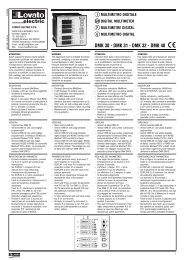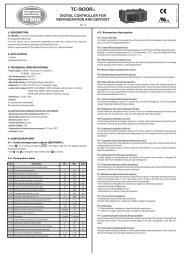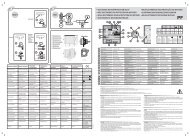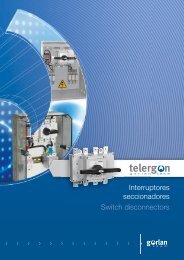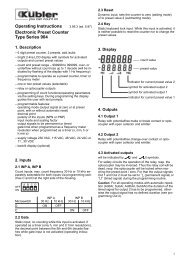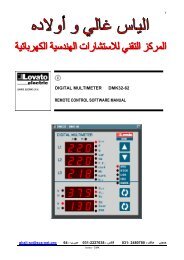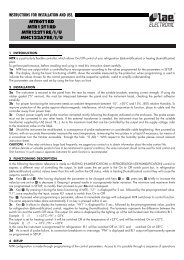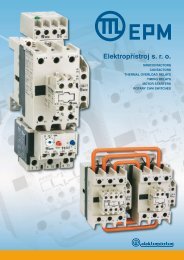NOVAR 1106 / 1114 / 1206 / 1214 NOVAR 1xxx / S400 NOVAR ...
NOVAR 1106 / 1114 / 1206 / 1214 NOVAR 1xxx / S400 NOVAR ...
NOVAR 1106 / 1114 / 1206 / 1214 NOVAR 1xxx / S400 NOVAR ...
You also want an ePaper? Increase the reach of your titles
YUMPU automatically turns print PDFs into web optimized ePapers that Google loves.
<strong>NOVAR</strong> <strong>1xxx</strong> EPM Elektropřístroj s. r. o.<br />
All of the transistor outputs in the group are galvanically insulated from the other controller circuits.<br />
The transistor outputs must be powered from the switching module’s power supply or from an external<br />
power supply giving 10 to 30 V DC and protected with a fuse 0.3 to 0.5 A (for example ZP-24 that can<br />
be ordered from the controller supplier). The power supply’s negative terminal post must be connected<br />
to the common terminal, number 17.<br />
5.3.2 Relay Outputs<br />
The instrument has 2 output relays, 13, 14. The relays’ contacts go to terminals 33, 34. Relays’<br />
common contacts are internally connected to power supply terminal 3 (L) — when an output relay<br />
contact closes, power supply voltage appears at the corresponding output terminal.<br />
The relays’ output contacts are bridged with varistors.<br />
5.4 Operation<br />
5.4.1 Thyristor and Contactor Group<br />
The controller features twelve transistor outputs, T1 through T12, and two relay outputs, R13 and R14.<br />
Thyristor switches can be connected directly to the transistor outputs. Contactors can be connected<br />
directly to the relay outputs. Thyristor switches must be connected successively starting with output T1<br />
while the number of outputs used must be specified in parameter 28 on controller powerup (the<br />
parameter’s default value is 0).<br />
Display test will take place first on powerup. Information as described in Chapter 3.1 will then be<br />
displayed momentarily while the last parameter displayed is the number of transistor outputs used<br />
(such as ).<br />
After that you have to set the parameter to the actual number of thyristor switches connected to the<br />
transistor outputs. The automatic connection configuration detection process and automatic section<br />
power recognition process follow in a standard way as described in Chapters 3.2 and 3.3.<br />
Parameter 28 value defines the thyristor group, which is a group of outputs to which thyristor<br />
switches are connected. All the other outputs are the contactor group. Example: parameter 28 is set<br />
to 3 – outputs 1 through 3 are the thyristor group and outputs 4 and 14 are the contactor group.<br />
The thyristor groups outputs are used by the controller for fast control process. The contactor group<br />
outputs are used for slow control process (see further below).<br />
If not all the transistor outputs are used for connection of thyristor switches, the unused ones can be<br />
used for connection of contactors; contactors, however, must be connected to the transistor outputs<br />
via auxiliary relays (such as Schrack RT with 24 V DC coil). A wiring example is shown in an<br />
appendix.<br />
5.4.2 Control Principles<br />
Two simultaneous, into a degree independent, control processes take place in <strong>NOVAR</strong>1312 controller:<br />
<br />
fast control process with thyristor group outputs driving semiconductor switches<br />
<br />
slow control process with contactor group outputs switching contactors<br />
Fast control process has a measurement stage, calculation stage and execution of control<br />
intervention. The control intervention rate, as well as the transistor outputs’ reconnection delay time,<br />
can be specified to allow control process adaptation to power of the quick-discharge resistor used.<br />
The sections that only differ by less than a quarter from the transistor group’s smallest section are<br />
considered equal by the controller and they are switched cyclically. When calculating the optimum<br />
50



